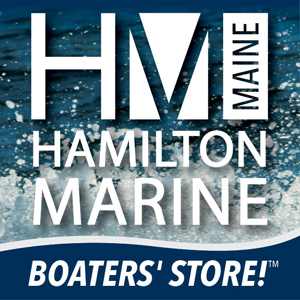By Sheila Dassatt
As we start the new lobster season for 2025, we are under a lot of change and a lot of pressure. We now have a sort of new President, or a comeback, which is going back and trying to move forward once again. We also have a new DMR Commissioner and have lost the one that we had for 13 years. Whether we like it or not, we settle in and don’t always like change, well we have change now! We have various associations that may agree or agree to disagree and we all are trying to work for the same cause, our lobster industry. We must stop pointing fingers at each other and make it all work for the good.
This has been a very rough and tumultuous time in our lives, whether it is our personal or professional existence. The Blame Game is how is we end up in these situations in the long run and hopefully we can go back to what is really traditional and what is reaction. What I’m saying as one example is that for years, the price of lobster is up in the winter and early spring. Their shells are firmer, they are a much better quality product and there isn’t as many to offer. This all goes back to price and demand. A few years back, I remember when Mike and I would go to meetings at O’Hara’s in Rockland (bait dealers) to talk about just this subject. We were among others in the industry that were there and we tried to establish an agreement and a better understanding of the start of the season. They were trying to work with their quota for herring at the time and we were trying to all figure out when we would be using the most bait. We all tried to reach a better understanding of our resources.
So with bait and supply and demand at mind, we agreed to not try to use quite as much bait until the end of June and mostly focus on July and August. That way, there should be more bait for what we need and that they can provide. It all worked fairly decent and was agreeable. Now, even the lobster dealers, that also supply bait are saying the same thing. If we bait up now, until the catch goes up, we are wasting a lot of bait and dumping it when we need it more in the future. This also makes our start up expenses more as well. When we do this too early, we end up getting upset about what we are paying for bait and let the fun begin…..we start blaming the bait suppliers and dealers, getting upset about the catch being down and the prices dropping and being “in the tank.” Now come on, isn’t this all traditional common sense? This has gone on since my grandfather and his before him were lobstering. I know that we have recently come up with the saying “fish smarter, not harder.” This all makes sense if you really think about it. Who’s fault is it? Nobody’s fault, really. We all have a part in this scenario. Somehow, we can blame the power’s to be above us in the government, and come out not accepting responsibility for our own actions.
Another example is all of this talk about protecting our resource, so let’s give out V-notch tools, which we can’t make anybody do anything if they chose not to, we can’t be on every boat to watch everyone. So what is another solution? Well, for years, since the late fifties, Maine has banned the landing of drag caught lobster by-catch. There was a decline then and it is why it has taken so long to bring it all back again. So with that said, twice DELA has gone to fight this when they try to bring it back in the legislature. So why do they still allow the landing of by-catch lobsters in other areas, such as Massachusetts? They have a big decline in these areas and really wonder why? These big lobsters are protected in Maine, so why doesn’t it stand to reason that it might be working for us and the others if this was a universal law? We have proof from the last hearings in printed material such as National Fishermen, that these draggers target the lobsters. These lobsters are a big part of our brood stock. So again, who do we blame?
This issue has nothing really to do with gauge increases or V-notch tools, it deals with the reality of common sense. At one time, we had what they called a Thistle Box, which was electronic but an analog device that had to be downloaded after a certain amount of data was taken. How this worked was the tally from the string of lobster traps would be punched into the box. The box collected data on counters, short lobsters, oversized, eggers and V-notch. This would give an accurate account of what was actually caught on a specific day. The positives to this system is that it gave you a complete picture of what you were catching in each string. It would also give a clear picture on the status of our resource. Currently, we have to do trip reports daily. This information gathered does not account for the discarded lobsters. How can we get an accurate reading on our biomass when we are not having this information collected? I would think that even though this might be a little more time consuming to our hauls to collect the data, I feel it would pay dividends in the end. This would give us a lot better accuracy in a percentage of lobsters kept to lobsters released. With the advances in technology, it would be much easier than it was to gather this information.
I know that our current DMR Commissioner is well aware of that project in the late 90’s and early 2000’s. Maybe this could be an option to gather more precise and accurate data on our lobster resource. Rather than feeling like these regulations are being “crammed down our throats” the fishermen need to get pro-active in helping to establish a better way of collecting information on the lobster resource. We all keep screaming that the information is flawed, so let’s all get involved and make it so that we provide more accurate information.



